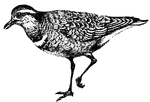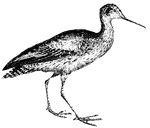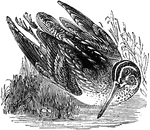Clipart tagged: ‘snipe’
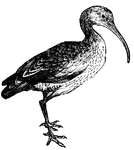
Curlew
These birds are characterized by their curved beaks. Their food consists of insects, worms, slugs, aquatic…

Snipe Eel
"An eel-like fish, Nemichthys scolopaceus; any member of the Nemichthyidae. The snipe eel attains a…
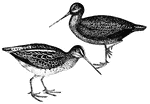
Snipe
The snipe does not live so solitary a life as the Woodcock; it is occasionally seen in flocks.

Snipe
"Snipe is the name of a common family of birds. The common American snipe is about equal in size to…
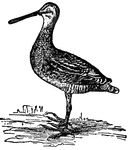
Snipe
A genus of wading birds. They are common to America and Eurasia, and mostly frequent the regions along…
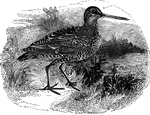
Double Snipe
The double snipe, also known as the solitary snipe and the great snipe, is found sparingly throughout…
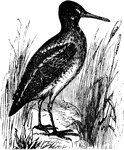
English Snipe
"Gallinago media. European Snipe. English Snipe. In size, form, and general coloration indistinguishable…

European Snipe
Ranging as far north as Scandanavia, Iceland, and Greenland in the summer, the European snipe migrates…
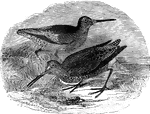
Gray Snipe
The gray snipe is a migratory bird, found in the United States. It is also known as the brown snipe,…
